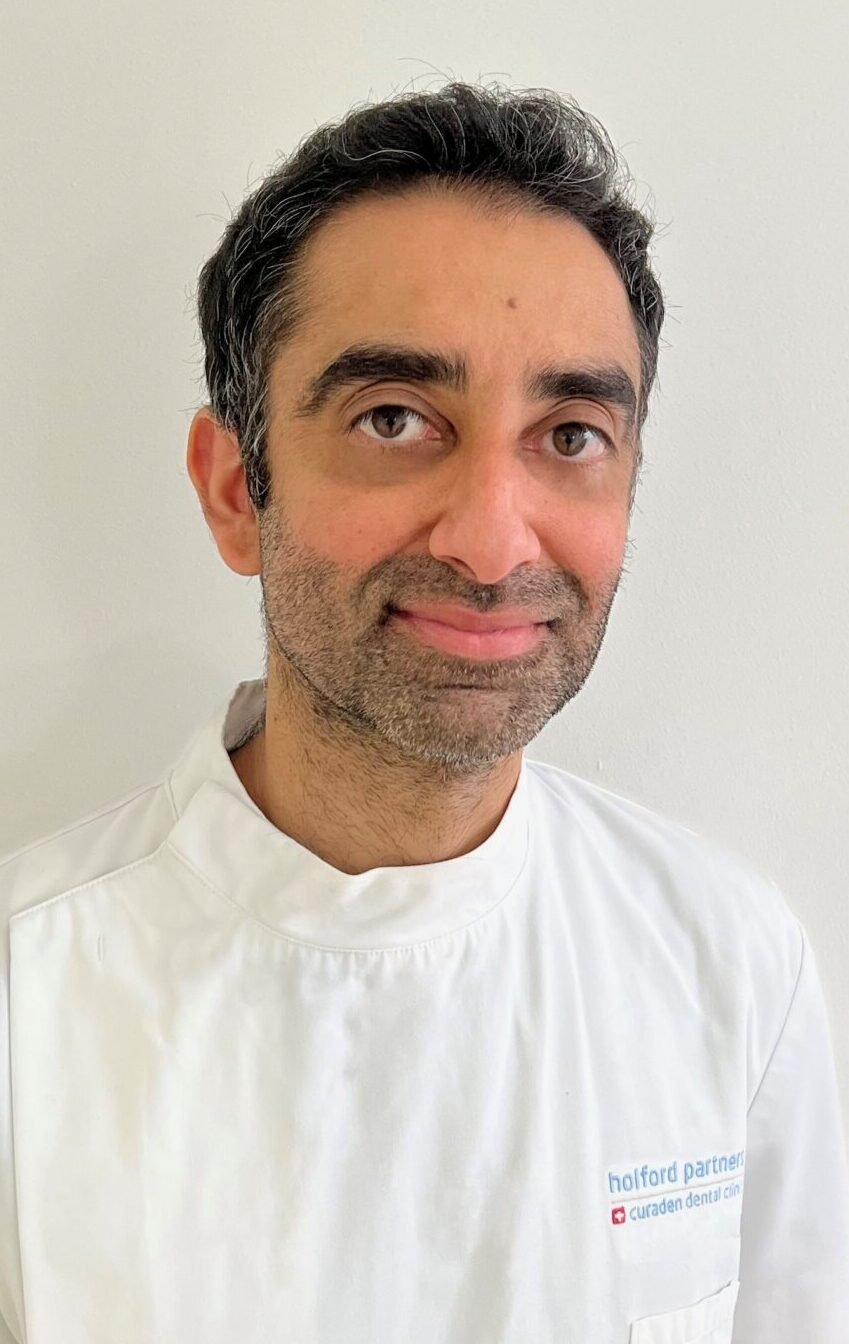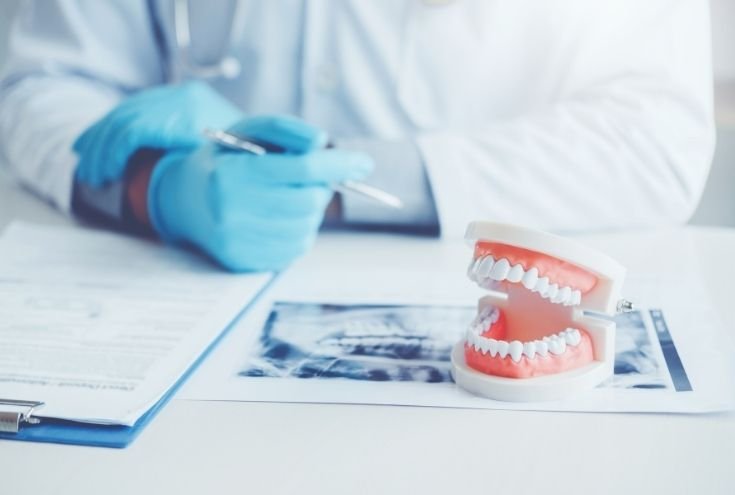

Dental Inlays & Onlays
What are they?
Dental inlays and onlays are used instead of fillings to replace parts of a damaged or decayed tooth. Similarly to dental crowns and bridges they are bespoke made in the dental lab and placed over the damaged are that has been prepared beforehand (usually the top, biting surface of the tooth). Inlays and onlays can be made of gold which are placed on the back molar teeth because they are stronger and more resistant to chewing. However, they are less aesthetically pleasing than the alternative white (composite or porcelain) dental inlays and onlays.
Dental Inlays & Onlays
What are they?
Dental inlays and onlays are used instead of fillings to replace parts of a damaged or decayed tooth. Similarly to dental crowns and bridges they are bespoke made in the dental lab and placed over the damaged are that has been prepared beforehand (usually the top, biting surface of the tooth). Inlays and onlays can be made of gold which are placed on the back molar teeth because they are stronger and more resistant to chewing. However, they are less aesthetically pleasing than the alternative white (composite or porcelain) dental inlays and onlays.

BEFORE & AFTERS
Dental Inlays and Onlays
Dental inlays and onlays are restorations used to repair and strengthen damaged or decayed teeth. They are similar to fillings, but are used for more extensive damage or decay.
An inlay is a custom-made filling that fits into the grooves or indentations of a tooth, and is used to restore the tooth when there is damage or decay that is too extensive for a traditional filling. Inlays are usually made of porcelain, gold, or composite resin and are designed to fit snugly within the tooth, providing a tight seal that helps to prevent further decay.
An onlay, also known as a partial crown, is similar to an inlay, but is used to restore a larger portion of the tooth. It covers the entire biting surface of the tooth, and one or more cusps (the pointed parts of the tooth surface) and is used when there is extensive damage or decay that cannot be repaired with a traditional filling or inlay.
Both inlays and onlays are custom-made in a dental lab, and are cemented into place by a dentist. They are a conservative alternative to full crowns, that preserve more of the natural tooth structure while providing similar strength and durability.
Dental inlays and onlays can vary in shape, size and material. They can be made out of porcelain, composite or gold to specifically repair the damaged part of a tooth.
Similarly to crowns and bridges they are custom made by our skilled dental technicians to fit a cavity in your tooth or to sit on top of it to restore the shape and structure of your tooth. Porcelain and composite dental inlays and onlays are matched to the same colour as your natural tooth.
How are they put in place?
Your dentist will remove any old filling material or damage and use a impression or 3D scan which will be used by the lab technicians to determine the shape and colour match of the inlay or onlay. You may be given a local anaesthetic so your dentist can remove any decayed parts of the tooth. While you wait for the technicians to make the custom made dental inlay or onlay your dentist will place a temporary filling to protect the area. After one to two weeks your dentist will then remove the temporary material and cement the dental inlay or onlay in place.
Dental inlays and onlays are restorations used to repair and strengthen damaged or decayed teeth. They are made of materials such as porcelain, gold, or composite resin, and are designed to fit snugly within the tooth, providing a tight seal that helps to prevent further decay.
Dental inlays and onlays offer a number of benefits when compared to composite fillings, including:
1. Longevity: Inlays and onlays are typically made of more durable materials, such as porcelain or gold, and can last for many years. This makes them a more cost-effective option in the long run, as they will not need to be replaced as frequently.
2. Strength: They are bonded to the tooth, providing extra stability and support, which helps to prevent further damage or decay. This is especially beneficial for larger cavities or for teeth that have been weakened by previous fillings.
3. Aesthetics: Inlays and onlays also have a better aesthetic outcome than composite fillings, they can be matched to the natural colour of the tooth, providing a more natural-looking restoration. This can be particularly important for teeth that are visible when you smile or speak.
4. Better for larger cavities: Inlays and onlays are better for larger cavities as they can be used to restore the tooth shape and prevent further damage.
5. Reduced tooth sensitivity: Dental inlays and onlays can help to reduce tooth sensitivity as they seal the tooth and protect it from further decay. This can be particularly beneficial for people who experience sensitivity in their teeth due to exposed roots or other dental issues.
Dental inlays and onlays offer several benefits when compared to crowns, including:
1. Preservation of tooth structure: Inlays and onlays preserve more of the natural tooth structure compared to crowns, as they are designed to fit within the tooth, rather than covering it entirely.
2. Longevity: Crowns typically last longer than inlays and onlays. However, if the tooth is not severely damaged, an inlay or onlay may last just as long as a crown, while preserving more of the natural tooth.
3. Cost: Inlays and onlays are typically less expensive than crowns, as they require less tooth removal and less material.
4. Indication: Inlays and onlays are suitable for teeth with moderate decay or damage, whereas crowns are typically used for more severe cases where the tooth is significantly damaged or decayed.
Overall, dental inlays and onlays are a more conservative option than crowns, as they preserve more of the natural tooth structure while providing similar strength and durability. They are also less invasive and less expensive than crowns. However, in certain cases, like a heavily broken down tooth or a tooth with an existing root canal, a crown may be the best option.
Dental inlays and onlays typically involve two dental appointments.
1st Appointment:
During the first appointment, the dentist will examine the tooth to be treated and determine if an inlay or onlay is the appropriate treatment. Next, the dentist will remove any decay or damage in the tooth and prepare the tooth for the dental inlay or onlay. This preparation process may involve removing some of the tooth structure to make room for the inlay or onlay.
After the tooth has been prepared, an impression or 3D digital scan of the tooth will be taken and sent to our dental laboratory where the inlay or onlay will be custom-made by our skilled technicians. The dental inlay or onlay will be made from a variety of materials such as porcelain, composite resin, or gold. The material used will depend on the location and function of the tooth, as well as the patient’s preferences.
2nd Appointment:
During the second appointment, your dentist will bond the inlay or onlay to the prepared tooth using a dental adhesive. The inlay or onlay will be carefully positioned and checked for proper fit, bite and occlusion. Once the inlay or onlay is in place, your dentist will cure the dental adhesive with a special light and will then polish the inlay or onlay to ensure a smooth surface and a natural look.
The entire process can take about 2 weeks. After the procedure, it is important to avoid hard or crunchy foods for the first 24 hours, and to avoid eating or drinking hot or cold foods and drinks for the first few days to avoid tooth sensitivity. Your dentist will provide you with additional instructions on how to care for your inlay or onlay and how to schedule regular check-ups.
How much do inlays and onlays cost?
Depending on the type of material used and the number of teeth that require an inlay or onlay, the cost will differ. They can be made of procelain, composite or gold.
DENTAL INLAY (per tooth) ……………….. from £1200
DENTAL ONLAY (per tooth) ……………….. from £1200
Dental Inlay
BEFORE & AFTERS
Dental Inlays and Onlays
Dental Inlay
Who offers this treatment?
Restore Your Teeth Back To Health
Damaged and decaying teeth if left untreated can lead to avoidable treatments such as tooth extraction.
Don’t allow it to get that far and gain back control of your smile.
Inlays and onlays are great solutions if you have damaged or decaying teeth. These treatments will strengthen your natural teeth and replace what you have lost.

In Pain Or Discomfort?
We advocate prevention to avoid oral health problems, but if you are experiencing pain or discomfort right now, we can remove that problem for you as early as possible. Don’t wait until your next check-up!


If you have relatively healthy gums, you are most likely able to proceed to the treatment. It may also be a good idea to see the dental hygienist to remove any tartar and prevent any further issues from occurring in your other teeth.

At Holford Partners Curaden, we only use technicians we know and trust will make the best quality inlays and onlays and guarantee a long lasting result and function.
Your inlay or onlay can be made of a variety of materials such as gold, porcelain, zirconia, and composite resin. It all depends on the tooth and your desired aesthetic result.
Inlays and onlays are usually placed on molar teeth where the heavy chewing occurs and so you can opt for a stronger material like gold, however patients usually go for porcelain or zirconia for aesthetic reasons because it blends in with the natural colour of your tooth. They still produce long lasting results. Your dentist will advise you of your options.

For the first session, your dentist will examine and prepare the tooth that needs the inlay or onlay. The dentist will then prepare and trim the damaged part of the tooth and take a 3D digital scan or impression of your tooth that will be used by the technician to make the permanent inlay and onlay.
The dentist will then put a temporary filling into the cavity of the tooth for protection. After this point, your first appointment will be complete and you will be scheduled around one to two weeks later to fit the permanent inlay and onlay.
At your second and final visit your dentist will cement the permanent replacement.

If you have relatively healthy gums, you are most likely able to proceed to the treatment. It may also be a good idea to see the dental hygienist to remove any tartar and prevent any further issues from occurring in your other teeth.

At Holford Partners Curaden, we only use technicians we know and trust will make the best quality inlays and onlays and guarantee a long lasting result and function.
Your inlay or onlay can be made of a variety of materials such as gold, porcelain, zirconia, and composite resin. It all depends on the tooth and your desired aesthetic result.
Inlays and onlays are usually placed on molar teeth where the heavy chewing occurs and so you can opt for a stronger material like gold, however patients usually go for porcelain or zirconia for aesthetic reasons because it blends in with the natural colour of your tooth. They still produce long lasting results. Your dentist will advise you of your options.

For the first session, your dentist will examine and prepare the tooth that needs the inlay or onlay. The dentist will then prepare and trim the damaged part of the tooth and take a 3D digital scan or impression of your tooth that will be used by the technician to make the permanent inlay and onlay.
The dentist will then put a temporary filling into the cavity of the tooth for protection. After this point, your first appointment will be complete and you will be scheduled around one to two weeks later to fit the permanent inlay and onlay.
At your second and final visit your dentist will cement the permanent replacement.
Dental Inlay
Restoring Damage
&
Replacing Loss
HIGH-TECH DENTAL SCANNING
At Holford Partners Curaden we use high-tech 3D digital scanners to take accurate images and create digital models of your teeth to produce the final inlays and onlays.
HIGH-QUALITY MATERIALS
We only use technicians that we know and trust. Some individuals have been creating our lab work for more than 20 years. We only use the highest quality materials available to provide you with the best possible results.
LONG-LASTING SOLUTIONS
Inlays and onlays will last a few decades. Ensure that your dentist has the necessary skills to provide you something that will last and not require premature replacements.
Restoring Damage
&
Replacing Loss
HIGH-TECH DENTAL SCANNING
At Holford Partners Curaden we use high-tech 3D digital scanners to take accurate images and create digital models of your teeth to produce the final inlays and onlays.
HIGH-QUALITY MATERIALS
We only use technicians that we know and trust. Some individuals have been creating our lab work for more than 20 years. We only use the highest quality materials available to provide you with the best possible results.
LONG-LASTING SOLUTIONS
Inlays and onlays will last a few decades. Ensure that your dentist has the necessary skills to provide you something that will last and not require premature replacements.
Frequently Asked Questions
There are very few differences between inlays and onlays. Quite often both terms are used interchangeably. An inlay is a bespoke made piece of dental material that is placed inside a cavity on your tooth and an onlay will restore the tips/cusps of the biting surface of your tooth. They can be made of a variety of materials, such as gold, composite or porcelain.
Inlays and onlays offer several advantages over traditional fillings. They are more durable, can last for many years, are less likely to cause tooth sensitivity, and can help to preserve more of the healthy tooth structure. They also have a natural-looking appearance and can be matched to the color of the tooth.
Dental Inlays and onlays are indicated for teeth with moderate to severe decay or damage that cannot be repaired with a traditional filling. They are also a good option for teeth that have had previous fillings and need to be replaced. Inlays and onlays are also suitable for teeth with cusps that have been worn down.
The process of placing inlays and onlays typically involves two dental appointments. During the first appointment, the dentist will remove the decay or damage and prepare the tooth for the inlay or onlay. An impression of the prepared tooth will be taken and sent to a dental laboratory where the inlay or onlay will be custom-made. During the second appointment, the dentist will bond the inlay or onlay to the prepared tooth using a dental adhesive.
Caring for your dental inlays and onlays is similar to caring for your natural teeth. It is important to brush and floss regularly to remove plaque and food particles, and to visit your dentist regularly for check-ups and cleanings. Avoiding hard and sticky foods, and using proper biting and chewing techniques can also help to prolong the life of your inlays and onlays.
As inlays and onlays are specifically made to fit your tooth, we will need to see you for two visits. The first appointment will be to prepare the damaged area of the tooth and prevent the removal of healthy tooth structure. The dentist will place a temporary material over the trimmed area to protect it whilst the inlay or onlay is being made.
The second and final visit will be around one to two weeks later to fit the permanent restoration.
Inlays and onlays can last for many years with proper care and maintenance. The longevity of inlays and onlays depends on the type of material used and the location of the restoration. Porcelain inlays and onlays, for example, can last up to 15 years, while composite resin inlays and onlays typically last between 5-10 years.
There may be some mild discomfort or sensitivity after getting a dental inlay or onlay, but this is usually temporary and can be managed with over-the-counter pain medication. If you experience severe pain or prolonged discomfort, please contact your dentist.










